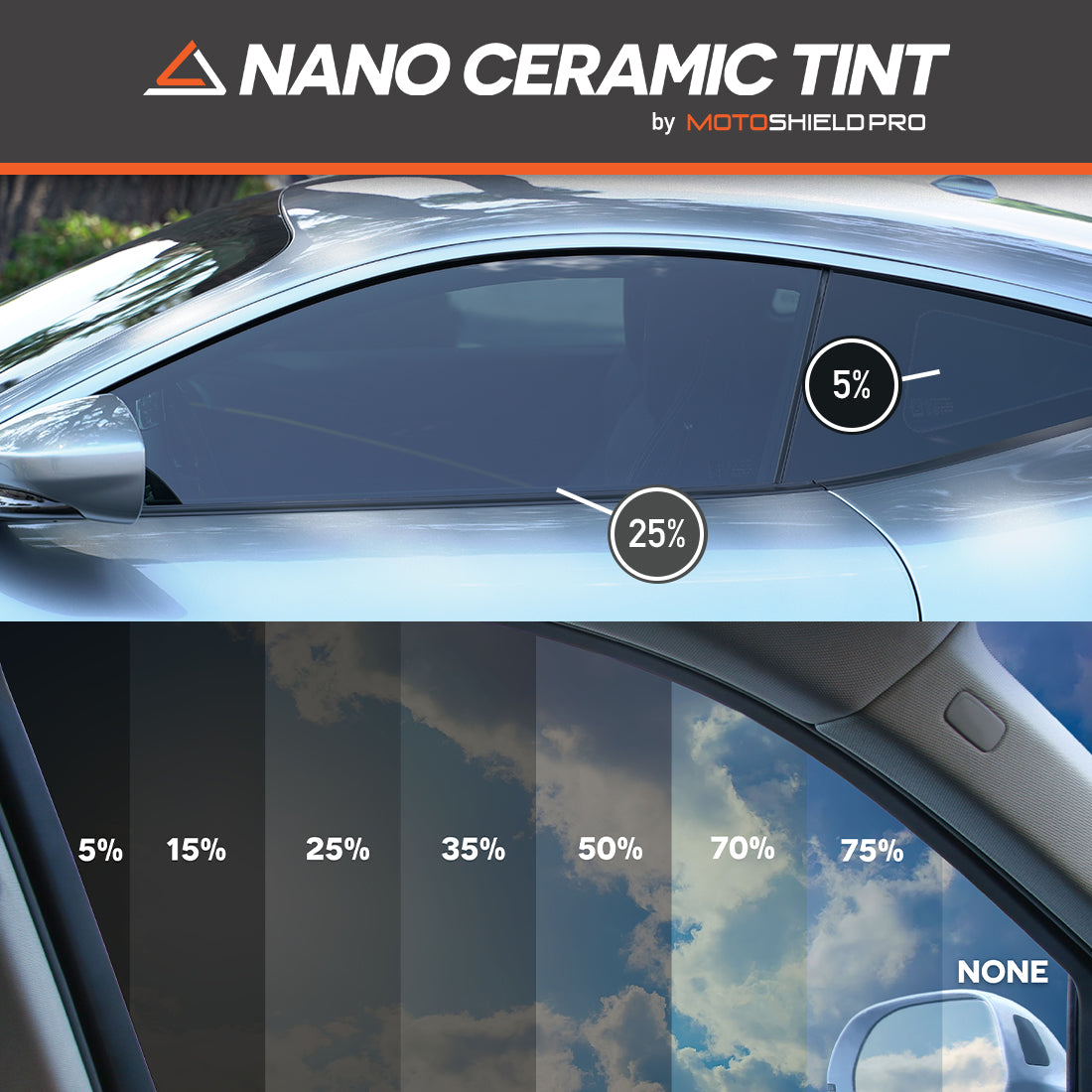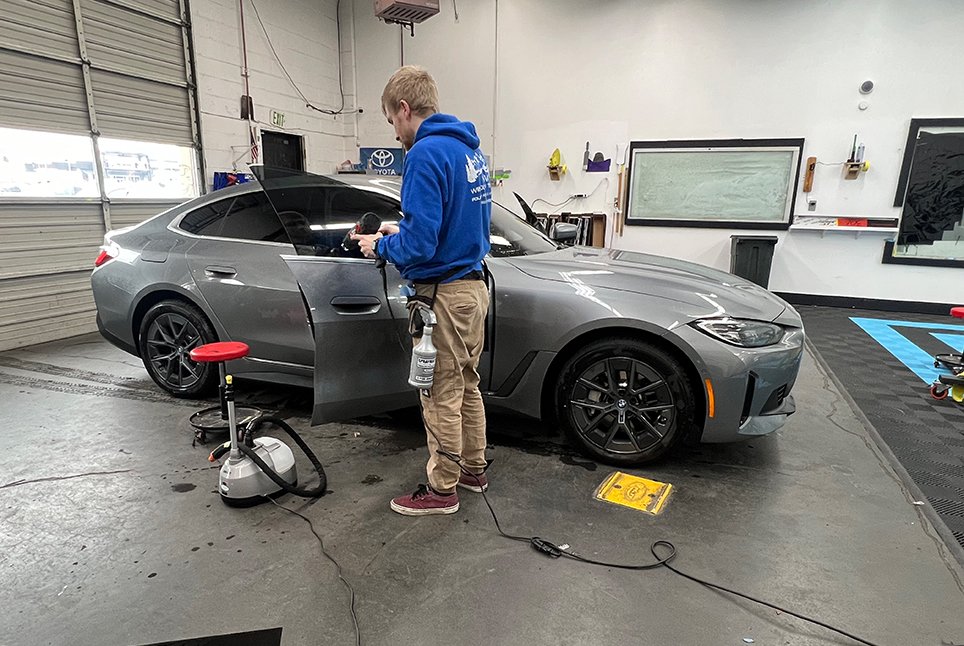Automobile Window Tinting: An Overview to Picking the Perfect Color
Automobile Window Tinting: An Overview to Picking the Perfect Color
Blog Article
Window Tinting Rules and Guidelines: What You Required to Know Prior To Tinting Your Cars And Truck
Prior to waging home window tinting for your automobile, it is important to familiarize yourself with the diverse regulations and standards that regulate this method across various states. These guidelines determine the permissible levels of color darkness, frequently gauged by noticeable light transmission (VLT) percentages, and include certain specifications for front windscreens focused on making sure roadway safety and security. Additionally, certain jurisdictions may provide clinical exemptions for individuals with qualifying conditions. Understanding these intricacies can conserve you from possible legal ramifications, but what are the specific guidelines in your state?
Overview of Window Tinting Laws
Home window tinting regulations are often subject to variation throughout different jurisdictions, reflecting local guidelines and safety and security considerations. These legislations determine the permissible degrees of color darkness and reflectiveness on car windows, making sure that vehicle drivers preserve adequate exposure while additionally protecting versus harmful UV rays and warm.
The majority of guidelines classify window tinting based on the Visible Light Transmission (VLT) portion, which suggests the amount of light that can go through the window. Usually, lower VLT portions signify darker tints. Laws commonly set apart between the front, side, and back windows, with stricter limitations put on the front windscreen to improve safety for both the motorist and other road customers.
Furthermore, some jurisdictions enforce restrictions on the reflectivity of the tint, protecting against too much glow that could impair visibility. Exceptions to these laws may exist for individuals with details clinical problems requiring extra sun protection. Compliance with window tinting guidelines is essential, as violations can cause fines, obligatory removal of the color, and potential boosts in insurance costs. Therefore, it is essential for automobile proprietors to acquaint themselves with neighborhood legislations before waging window tinting installments.
State-by-State Tint Laws
Comprehending the details window tinting regulations in each state is essential for vehicle owners looking for to adhere to the legislation. Each state in the united state has established its very own set of policies governing window tinting, which can vary significantly. These guidelines often determine the permitted levels of tint darkness, the kinds of windows that can be tinted, and any type of clinical exceptions that may apply.
As an example, states like California have strict constraints on tint darkness for front home windows, while others, such as New Mexico, may allow darker colors. Additionally, specific states mandate specific visibility percents for various home windows, including the windshield, front side windows, and rear home windows. It is essential for auto proprietors to acquaint themselves with their state's legislations to avoid prospective penalties or fines.
Moreover, some states might need an accreditation sticker label to be put on tinted windows, indicating conformity with state regulations. Failing to follow these regulations not just takes the chance of legal effects but can likewise affect safety and security and visibility while driving. Lorry owners must carry out extensive research or consult neighborhood authorities to make sure full understanding and conformity with state-by-state tint guidelines.
Allowed Tint Kinds and levels
Several car proprietors may be stunned to discover that permitted color degrees and kinds differ commonly throughout various states. Each state has established its own guidelines pertaining to the acceptable darkness and reflectivity of home window tint, often measured by Visible Light Transmission (VLT) percentages. VLT refers to the amount of light that can pass with the tinted home windows; therefore, a reduced portion indicates a darker tint.

In addition, the sorts of tint materials allowed can differ, with some states restricting metal or mirror-like view publisher site coatings. It is vital for lorry proprietors to acquaint themselves with their state's details laws to guarantee compliance. Non-compliance can result in fines, obligatory removal of the tint, or other lawful consequences, making it important to understand these laws before waging setup.
Medical Exceptions for Tinting
While not all states give allocations for medical exemptions concerning window tinting, those that do recognize the requirement for particular people to improve exposure and convenience due to clinical conditions. Numerous clinical conditions, such as lupus, skin cancer cells, and specific eye conditions, can make people particularly sensitive to sunlight. Consequently, these people may require darker colors to shield themselves from hazardous UV rays and glare.

It is very important to note that despite having a clinical exemption, there might still be limitations on the degree of tint enabled. Conformity with state legislations guarantees that people are both safeguarded and within lawful limitations. Those considering clinical exceptions need to contact their local Division of Electric motor Automobiles or equivalent authority to recognize the treatments and needs essential to look for an exception efficiently.
Penalties for Non-Compliance
Stopping working to abide with window tinting legislations can bring about considerable fines, which vary by state. Police are equipped to provide citations for automobiles that do not abide by the specified tinting guidelines. These fines generally consist of fines, which can range from moderate total up to a number of hundred dollars, depending upon the severity of the offense and the state concerned.
In some territories, repeated offenses might result in rising penalties or extra fines, such as obligatory court looks. Furthermore, non-compliance might find more require the elimination of prohibited tinting, usually at the proprietor's expenditure. In extreme instances, habitual transgressors might encounter suspension of their vehicle registration till conformity is attained.
Additionally, insurance policy implications may arise from getting numerous citations for window color offenses. Insurance firms might view such violations as an indicator of riskier actions, possibly causing boosted costs or difficulty in insurance coverage.
To avoid these fines, it is essential for car owners to familiarize themselves with their neighborhood home window tinting regulations and guarantee that their car complies (Window Tinting). This positive approach not only stays clear of lawful implications but additionally promotes roadway safety
Final Thought

Many guidelines identify home window tinting based on the Visible Light Transmission (VLT) percent, which indicates the quantity of light that can pass through the home window. Compliance with window tinting policies is critical, as offenses can result in fines, mandatory elimination of the color, and potential boosts in insurance policy premiums.Comprehending the specific home window tinting laws in each state is important for vehicle proprietors looking for to abide with the legislation. These regulations usually dictate the allowable degrees of tint darkness, the types of windows that can be tinted, and any clinical exceptions that may apply.
For instance, states like The golden state have rigid constraints on color darkness for front windows, while others, such as New Mexico, might allow darker colors.
Report this page